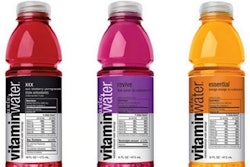So when Kellogg’s recalls tens of millions of retail cereal boxes due to off-odor it attributed to a chemical in its packaging, it was a bad day for Kellogg’s and for packaging. Approximately 50 consumers complained about off-odor or taste, and several reported being sickened.
And it was only a few months ago that McNeil Consumer Healthcare recalled a variety of its well-known OTC drug brands due to an off-odor attributed to a chemical in wood pallets that was picked up by polymer bottles held on or near the pallets.
If there is a trend to be identified in recent years, it is this: Packaging is beginning to be recognized by folks other than packaging professionals as an integral part of the picture in consumer product quality and safety.
Indeed, packaging professionals might even agree that within their own companies, it’s sometimes been the case that company officials don’t recognize the full importance of packaging. Nothing educates, unfortunately, quite like a crisis. And these recent crises, together with the preceding controversies (e.g., that over BPA in packaging, and European studies raising concerns about adhesives levels in food from packaging) have more or less suddenly raised the profile of packaging, for the worse.
Kellogg’s particular headache in this instance went beyond the usual cost and embarrassment associated with such a recall, as Congress took an interest.
In early August, Congressmen Henry A. Waxman of California and Bart Stupak of Michigan wrote to Kellogg’s asking for information about the company’s recent recall which the company had attributed to off-taste and odor due to unduly high levels of a substance, “2-methylnaphthalene,” used in making wax paper package liners. The inquiry seems as inspired by concerns about the potential health dangers of the chemical involved as with whether the company’s procedures were adequate. Kellogg’s appears to have acted responsibly in the face of the issue. FDA itself reportedly acknowledged that the company solved the tainted packaging problem by early August. (A newspaper report indicated the company may have destroyed tainted liner material before announcing the recall, though that appears not to have been so, and it’s unclear what would have been wrong with doing so in any event.)
The company was asked to provide copies of all its “policies and procedures” that help assure its foods don’t pose a risk to human health or are exposed to chemicals that might be dangerous, “or about which the company does not possess adequate information to assess whether the chemicals may be hazardous to human health,” along with the company’s assessments of the health risks from this particular chemical. Is this a trend that reflects a reduction in attention and care regarding packaging quality control? I answer bravely: I don’t know.
Regardless of the cause, there are at least 3 reasons why corporate executives at food and packaging makers should be paying close attention, if they are not already doing so, to their packaging materials’ compliance, including confirming their compliance with food contact or drug packaging requirements in the first instance, and then on an ongoing basis.
One is, we are very likely to see a new food safety law finalized before year end, and it is expected to contain mandatory FDA recall power and a requirement that food makers impose a hazard analysis-type control program a la HACCP, now required for seafood, juices, meat and poultry, and infant formula. Even those who don’t make food but just make food packaging already have felt the pressure for some years to have such HACCP plans in place, as food makers increasingly want every one of their foods’ components, including its packaging, to be made in accordance with a controlled system. As noted in Packaging World, April 2010, the Institute of Packaging Professionals’ Food Safety Alliance for Packaging has already published model HACCP plans for makers of six different types of packaging. [Editor’s note: The author is a Board member of FSAP and General Counsel to IoPP.]
Second, there have been rumblings indicating that, as part of FDA’s new, tougher enforcement approach, it will resurrect use of criminal prosecutions of corporate officials when violative products are put on the market, even when the officials had no intention of violating the law.
Finally, a third good reason to pay close attention to these issues is that they are being attacked from two different government angles, because such issues are viewed as chemical safety controversies at least as much as food contact material compliance issues. The Congressional inquiry into the Kellogg’s matter echoes complaints of the Obama administration’s Environmental Protection Agency over the past year or so, which has led it to tighten up its oversight of some chemicals.
So, because it appears that food packaging as such is going to be a more prominent player on the regulatory scene, packagers are especially well advised right now to make compliance a priority.























